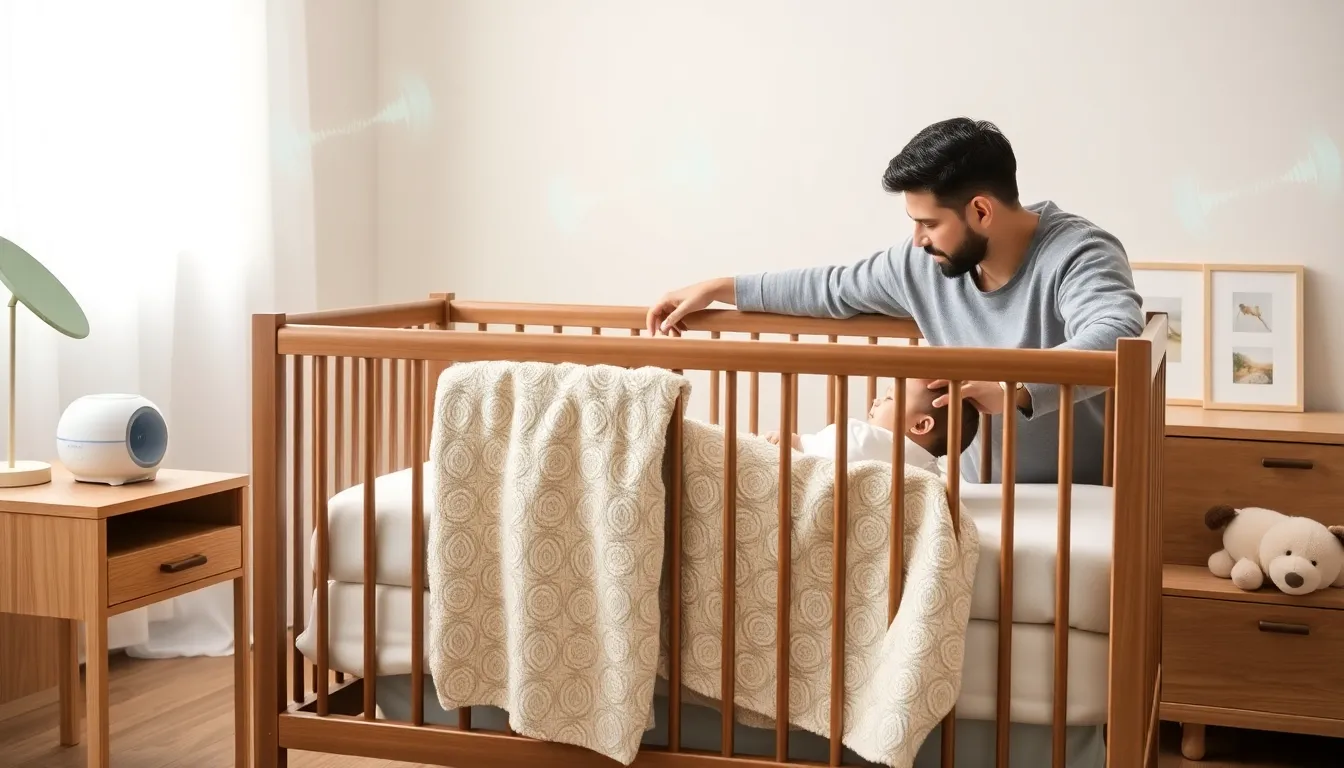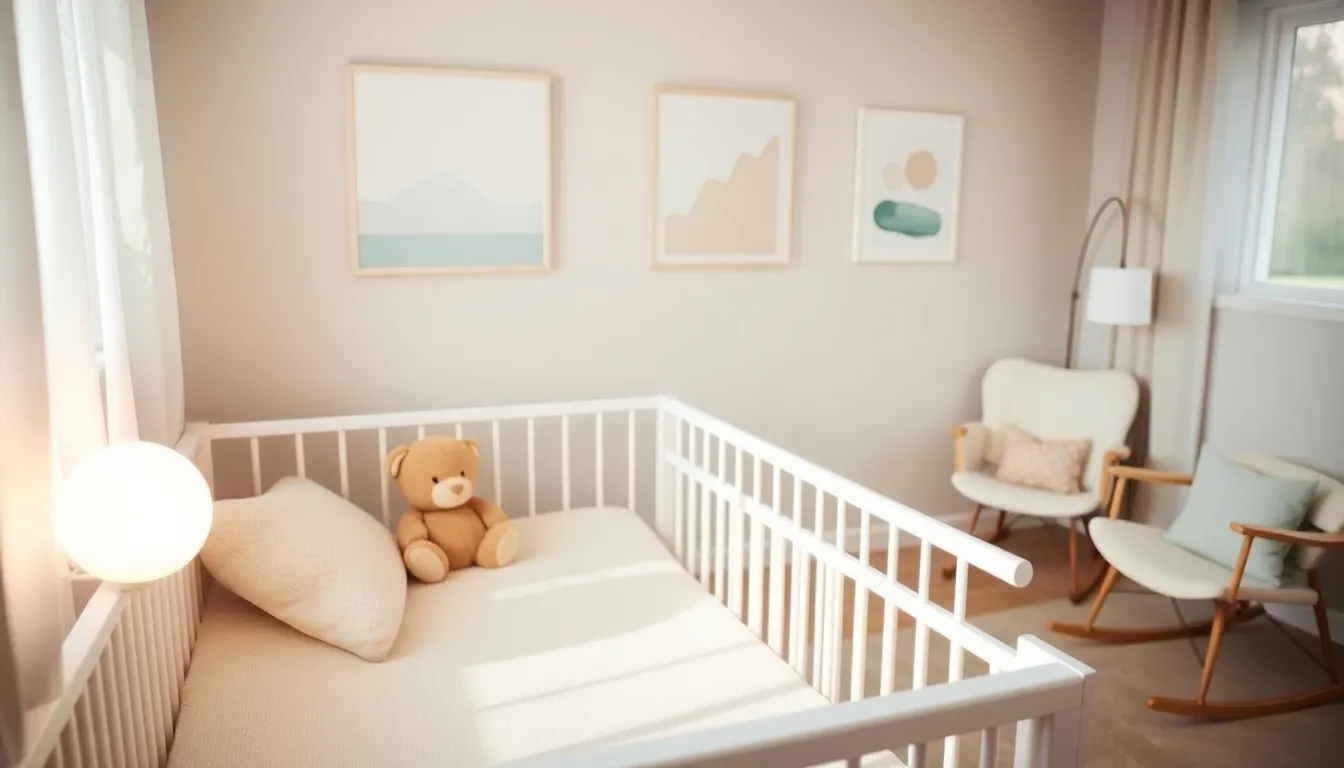Every parent knows the struggle of getting their little one to sleep. Enter white noise, the unsung hero of nighttime routines. Picture this: It’s 2 AM, and the baby is wide awake, practicing their vocal skills for the next big talent show. Now imagine a soothing waterfall sound drowning out all that noise, lulling them peacefully back to sleep. If you’ve ever wanted a magic solution to your baby’s sleep woes, white noise might just be your best friend. Let’s explore why this soothing sound can become an essential part of your baby’s bedtime routine, without the need for a fairy godmother.
Table of Contents
ToggleWhat Is White Noise?

White noise refers to a consistent sound that covers a range of frequencies, effectively masking other noises. Think of it as the comforting hum of a fan or the gentle swoosh of an air conditioner. Just like a sound blanket, white noise wraps around your baby, creating a cozy auditory environment that feels safe and familiar. While the term might sound complex, the concept is simple: it’s just sound that helps drown out background distractions. This can make a significant difference in the way babies fall and stay asleep.
The Science Behind White Noise
White noise is not just a fancy onomatopoeia. Studies suggest that the ears perceive it as a uniform sound, which can be soothing for babies, especially those who are used to the comforting sounds of the womb. It mimics the rush of blood and other ambient noises that they were surrounded by for nine months, creating a sense of security and calm.
Benefits Of White Noise For Babies
There are numerous benefits to using white noise for babies, and they extend beyond just getting them to sleep. Research highlights several key advantages:
- Improved Sleep Quality: Babies exposed to white noise may show longer periods of uninterrupted sleep. This is because it helps mask sudden sounds that can startle them awake.
- Shorter Sleep Onset: It allows infants to drift off to sleep faster. The gentle background noise can provide a sense of calm that encourages relaxation.
- Enhanced Mood: A well-rested baby is often a happier baby. Reduced nighttime awakenings lead to a contented little one during the day.
- Easier Sleep Training: For parents looking to establish a consistent sleep schedule, white noise can make transitions smoother, allowing babies to learn new sleep patterns without abrupt interruptions.
How White Noise Aids Sleep
The ability of white noise to help with sleep can be attributed to its sound-masking properties. Babies startle easily, and disruptions in their delicate sleep cycles can lead to unnecessary wakefulness. Here’s how white noise can make a significant difference:
Sound Masking
By generating a constant stream of pleasant sound, white noise masks environmental noises such as barking dogs, traffic, or even siblings playing. When babies are enveloped in this soothing sound environment, they are less likely to wake from sudden disturbances.
Creating a Sleep-Inducing Atmosphere
White noise contributes to a sleep-inducing atmosphere. Swaddled tightly and lulled by gentle sounds, babies feel secure, helping them transition into deeper stages of sleep. The ambiance created by white noise replicates their prenatal environment, making it easier for them to relax and fall asleep.
Types Of White Noise Machines
White noise machines come in various shapes, sizes, and features, catering to different preferences and needs. Here are a few popular types:
- Standalone White Noise Machines: These devices produce a range of sounds and often come with adjustable volume settings. Some even have additional features like timers or calming color lights.
- Apps and Mobile Devices: There are plenty of white noise apps available for smartphones. They offer various sound profiles, from rain to ocean waves, making them highly customizable and portable.
- Fans and Humidifiers: If you prefer a more natural option, using a fan or humidifier can work wonders. They produce a consistent sound without the need for electronic devices, blending well with your nursery’s design.
Choosing The Right White Noise For Your Baby
Selecting the ideal white noise source involves considering several factors:
Sound Quality
Not all white noise is created equal. Seek options that produce smooth, unbroken sounds rather than mechanical or beeping noises, which may irritate rather than soothe.
Volume Control
It’s essential to choose a device with adjustable volume levels. The sound should be loud enough to mask disturbances but soft enough to avoid startling the baby.
Setting Up A White Noise Routine
Establishing a white noise routine can promote better sleep for your baby. Here are some steps to follow:
- Start Early: Introduce white noise in the early weeks, making it a foundational element of your baby’s sleep environment.
- Consistent Timing: Use white noise every time you put your baby down for sleep, whether during naps or nighttime. This consistency helps reinforce the cue that sleep is near.
- Optimal Placement: Position the noise source a safe distance away from the crib, usually around 7 to 10 feet, while ensuring the volume is set at a comfortable level.
Safety Considerations When Using White Noise
While white noise can be an effective tool for sleep, safety must always come first. Here are some important considerations:
Volume Levels
The American Academy of Pediatrics recommends keeping the white noise below 50dB to ensure it’s safe for infants’ sensitive ears. Always prioritize gentle, soothing sounds over louder options.
Duration of Use
Using white noise continuously throughout the night is generally safe, but parents should check in periodically. It’s essential that babies have regular breaks from white noise to avoid dependency.



